Suffragette: A Stirring Journey Through Tears and Fire
Released in 2015, the film Suffragette, which compellingly recounts the fervent struggle of British women for the right to vote in the early 20th century, ignited a wave of debate and discussion. Central to some of these controversies were the film’s lead actresses—Carey Mulligan, Helena Bonham Carter, and Meryl Streep—who were criticized for wearing T-shirts emblazoned with the phrase “I’d rather be a rebel than a slave.” This slogan was perceived by some, particularly within certain African American communities, as culturally insensitive and offensive. Furthermore, critics, predominantly from the United States, argued that the film presented a “whitewashed” version of feminist resistance history, by focusing exclusively on white female activists and seemingly overlooking the significant contributions of women from other ethnic backgrounds.
The very fact that a single cinematic production could provoke such extensive and multifaceted discussions speaks volumes about its power and emotional resonance. My own experience of viewing Suffragette, augmented by numerous conversations and articles, confirms its essence as a profound journey of “tears and fire.” It’s a narrative replete with moments of heart-wrenching sorrow and despair, yet simultaneously imbued with the indomitable spirit of unwavering resistance. The film masterfully employs a restrained emotional landscape, allowing the echoes of a century-old struggle for justice to reverberate with striking pertinence in our contemporary world.
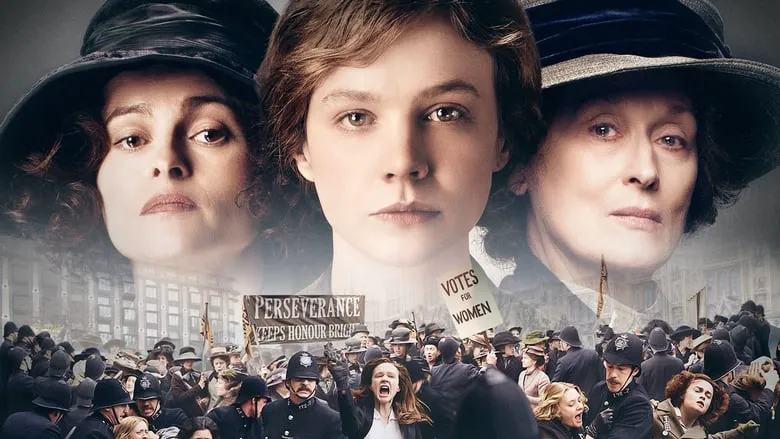
The Radicalization of a Movement
For approximately fifty years, the British women’s suffrage movement had largely adhered to peaceful methods, enduring widespread ridicule and neglect, with little tangible success to show for their efforts. It was against this backdrop of frustrated patience that Emmeline Pankhurst (1858-1928), the visionary founder of the radical Women’s Social and Political Union (WSPU) and a leading advocate for women’s suffrage, called for a dramatic shift in strategy. She urged women to adopt more assertive, even violent, means to force those in power to acknowledge their demands.
Suffragette commences at this pivotal juncture, set in London in 1912, and grounds its narrative through the eyes of a working-class woman named Maud Watts. While Maud (portrayed by Carey Mulligan) is not a specific historical figure, her character serves as a powerful amalgamation of several real-life suffragettes from similar modest backgrounds, such as factory worker Annie Kenney, seamstress and socialist Hannah Mitchell, and Constance Lytton. Maud, a 24-year-old laundry worker, initially leads a life that, though modest, is fulfilling, centered around her husband and young son.
However, her gentle existence is abruptly shattered as she becomes inadvertently, then deeply, entangled in the burgeoning women’s suffrage movement. This involvement brings harsh consequences: she is brutally beaten and humiliated by the police, verbally assailed by her husband, and subjected to ostracization by her neighbors. Through these escalating hardships, a profound realization dawns upon her. She reflects on a life spent toiling in a laundry factory since the tender age of seven, enduring relentless long hours, meager wages, and the pervasive shadow of sexual harassment from the factory owner. All the while, she strove tirelessly to fulfill the societal expectations of a ‘good wife and mother.’ Yet, a new possibility emerges from the depths of her despair. After courageously testifying before Parliament about the appalling conditions of her workplace, she declares with newfound resolve: “I can live my life in a different way.” This pivotal moment marks her transformation from silent victim to burgeoning activist.
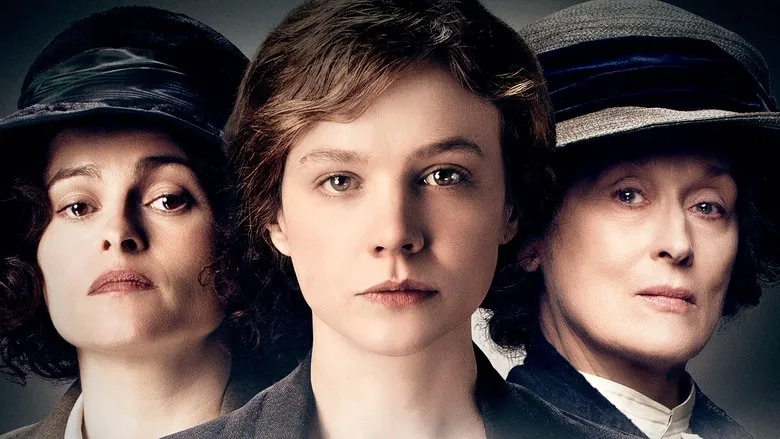
The Unbearable Price of Resistance
For working-class women like Maud, the cost of resistance proved extraordinarily high. Her burgeoning activism led to severe personal sacrifices: she was cruelly evicted from her home by her husband, heart-wrenchingly denied access to her beloved son, and fired from her job after standing up to the predatory factory owner. Repeatedly, she faced arrest and endured harsh imprisonment. Within the confines of the prison walls, Maud, along with her fellow courageous suffragettes, undertook hunger strikes, leading to the brutal and inhumane practice of force-feeding through tubes inserted into their noses.
Yet, rather than breaking their spirit, these injustices only hardened their resolve. Supporting and encouraging each other through shared suffering, these women became unwavering warriors. Their actions escalated from public protests to more drastic measures: they famously shattered windows, bombed mailboxes, disrupted telecommunication systems, and even targeted the residences of political figures. Maud’s powerful declaration to a police detective encapsulates their desperation: “We break windows, we burn things, because that’s the only way you’ll hear us! … We’re in every home, we’re half the human race, you can’t stop us! We will win!”
It is crucial to stress, as the film carefully does, that while their methods were radical and destructive of property, the suffragettes of the WSPU meticulously avoided causing physical harm or terrorizing people. The attempts by some British commentators to label their actions as “terrorism” are thus grossly inappropriate and misleading. Throughout their ordeal, whether gathering for protests or being released from prison, these resilient women frequently carried and exchanged small flowers—symbols of hope they clutched in their hands, pinned to their chests, and adorned their hat brims, signifying their unwavering optimism for a brighter future. No one was injured or killed by their hands; indeed, the only ones who ultimately shed blood and made the ultimate sacrifice in their unwavering struggle were the women themselves.
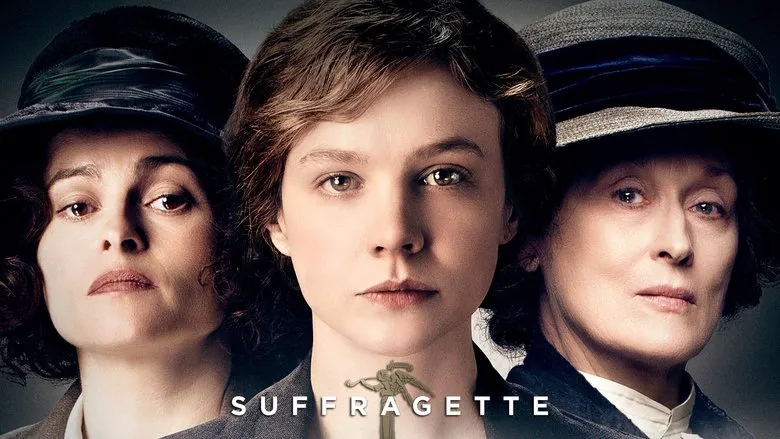
Emily Davison’s Ultimate Sacrifice
The movement’s profound struggle reached a tragic crescendo with the deliberate and ultimate sacrifice of Emily Davison (1872-1913), a fellow warrior and an icon of the suffrage movement. In 1913, at the highly anticipated Epsom Derby, Davison famously rushed onto the race track with the clear intention of attaching a “Votes for Women” banner onto the King’s horse, Anmer. In a moment of horrifying impact, she was tragically trampled to death by the thundering hooves of the oncoming horse. This astonishing and heartbreaking event was not only extensively covered by the world’s media but was also captured on silent film, ensuring its indelible mark on history. Her heroic sacrifice served as a profound catalyst, drawing the attention of an unprecedented number of people to the urgent cause of women’s suffrage. The poignant image of the banner left at the scene, later picked up by a father and wrapped around his newborn daughter, who went on to attend Davison’s funeral, encapsulates the enduring legacy of hope and sacrifice.
Emily Davison was a real historical figure, known for her sharp intellect and deep education. Yet, despite her capabilities, she faced the exasperating reality of limited job opportunities solely due to her gender. Her commitment to the cause was absolute, leading to her arrest nine times. She embodied Pankhurst’s powerful motto, “Deeds, not words,” and famously declared, “Better to die fighting than to live in silence,” a sentiment that powerfully underscored her ultimate act.
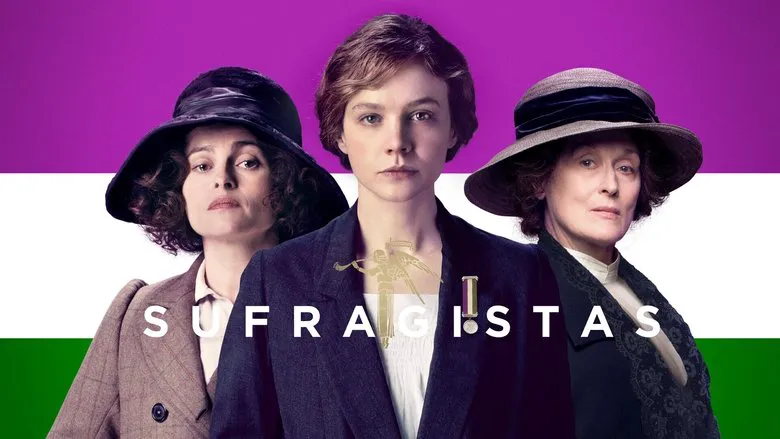
The Horrors of Force-Feeding
A particularly harrowing aspect of the suffragettes’ imprisonment was the extreme and degrading practice of force-feeding. Female detainees in prison often went on hunger strikes, both as a protest against their unjust incarceration and to demand more humane treatment for their fellow inmates. Fearing that any deaths in custody would severely damage the government’s reputation, prison authorities resorted to the agonizing method of forcibly feeding them through tubes brutally inserted into their noses.
This procedure was not merely painful; it was profoundly humiliating and psychologically scarring. The agonizing cries of the women undergoing this torment—Emily Davison herself was force-fed a shocking 49 times—were truly horrifying. Emmeline Pankhurst, who was repeatedly imprisoned and also subjected to force-feeding, vividly recounted the trauma in her memoirs: “I shall never forget, as long as I live, the agony I felt as those screams echoed in my ears.” This gut-wrenching passage is recreated with chilling authenticity in Suffragette, with the haunting sounds of suffering lingering long after the scene concludes.
The film’s sensory design further elevates its impact. Davison’s death at the racetrack, for instance, is heightened by a dynamic soundscape: the thunderous sound of hooves builds to a crescendo, followed by a sudden, suffocating silence after she falls, creating an overwhelming atmosphere of tragedy and shock. Cinematographer Eduard Grau employs a raw, almost journalistic style, favoring shaky, intimate close-up handheld shots. This technique powerfully conveys the chaos, immediacy, and urgent reality of the moment, imbuing the entire film with a contemporary, documentary-like feel, reminiscent of historical newsreels.
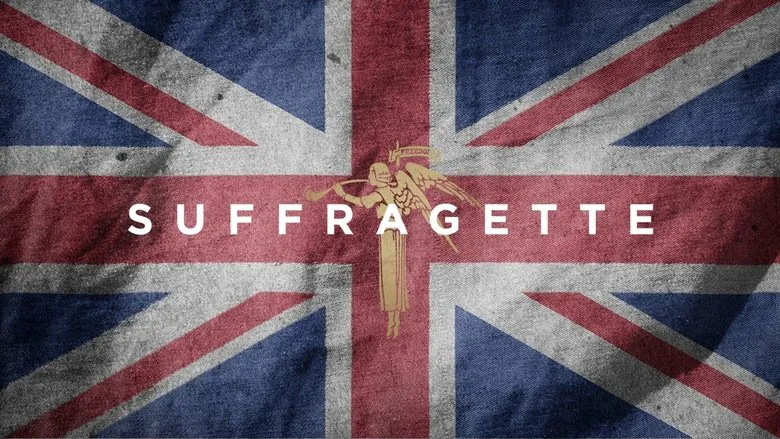
The Long and Winding Road to Suffrage
The monumental struggle for women’s suffrage in Britain finally yielded significant results in 1918, when voting rights were granted to men over 21 and women over 30 who met certain property qualifications. A crucial decade later, in 1928, the law was amended to achieve full equality, allowing all women over the age of 21 to vote, thus bringing the core goals of the movement to a triumphant close. During this tumultuous period, over a thousand brave women had been arrested and imprisoned for their beliefs and actions.
It’s also important to acknowledge, though notably omitted from the film’s narrative, that World War I played a significant, albeit complex, role in the eventual success of the women’s suffrage movement. During the war, Emmeline Pankhurst, advocating for national unity, famously proposed a temporary cessation of militant “armed resistance,” instead urging suffragettes to lend their full support to the government and unite against the common enemy, Germany. Following the war, partially as a means to pacify and recognize the immense contributions of all segments of society, and to address the pervasive social unrest, the government made concessions that effectively transcended previous social class and gender prejudices, leading to a degree of formal political equality.
The closing credits of Suffragette serve as a powerful global postscript, listing the diverse countries and the respective years in which women gained the right to vote. This historical sweep reveals intriguing insights: world wars, while bringing immense human suffering and widespread restructuring of power, paradoxically also opened doors to dismantle long-standing injustices. For instance, the Russian (1917) and Chinese Revolutions (1949) unexpectedly afforded women in these burgeoning socialist states early voting rights. Similarly, the aftermath of World War II and the subsequent wave of anti-colonial movements led to voting rights for women in various European countries (such as France, Italy, and Japan) and former colonies (like India). The credits also deliver a surprising statistic: Switzerland, a nation often lauded by Western observers as a bastion of civilization and democracy, astonishingly did not grant its women the right to vote until as late as 1971. I distinctly recall the gasps from American audience members in the back row during the screening, clearly unwilling to believe that Chinese women might have obtained suffrage significantly earlier than their Swiss counterparts—a moment that highlighted profound, ingrained perceptions of social progress.
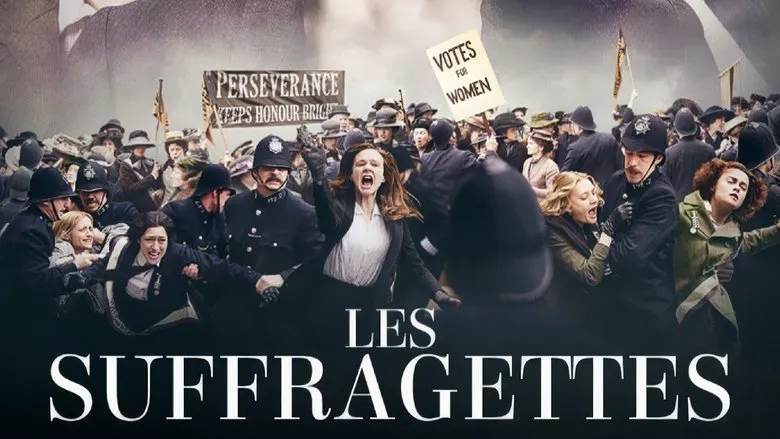
A Female-Led Production with Contemporary Relevance
Suffragette stands out not only for its historical subject matter but also for its rare production pedigree: it was helmed by an almost entirely female creative team. This formidable group included acclaimed screenwriter Abi Morgan (The Iron Lady), director Sarah Gavron (Brick Lane), two dedicated female producers, and, of course, its stellar main cast.
Responding directly to the critical accusations of racial “whitewashing,” director Sarah Gavron clarified that their extensive historical research, spanning ten years, indicated that white women indeed formed the dominant demographic among working-class female protesters in Britain around 1912. It was only after significant shifts in immigration policy in the 1950s that Britain’s population began to diversify more broadly. While two Asian women were involved in the movement at that time, they belonged to aristocratic families and were generally treated with more civility by officials, a stark contrast to the brutal treatment meted out to working-class women like Maud.
Adding a fascinating layer of personal history to the production, British actress Helena Bonham Carter portrays Edith Ellyn, a pharmacist who becomes a steadfast fighter against gender discrimination, even making bombs to damage mailboxes. Intriguingly, Bonham Carter’s own great-grandfather was Herbert Asquith, who served as the British Prime Minister during the suffrage era and was a fierce opponent of women’s voting rights. Helena poignantly explained her motivation, saying, “I want to talk to my elders in this way,” transforming her role into a cross-generational dialogue about historical injustice.
Gavron further underscored the film’s enduring and crucial contemporary relevance. She highlighted sobering current statistics: 62 million girls worldwide are still denied access to education based purely on gender discrimination; a mere 22% of British parliamentarians are women; most industries continue to grapple with persistent gender pay gaps; and a staggering one-third of British women experience various forms of sexual violence. Within the film industry itself, gender inequality and salary disparities have become subjects of increasing critique from a growing number of female practitioners in recent years. To this day, a dishearteningly low percentage—only 1-10%—of films globally are directed by women.
Gavron profoundly articulated the historical truth that history is predominantly written by powerful men, often leading to the suppression and erasure of women’s narratives. She noted that countless brave women from humble backgrounds, many with low literacy rates, toiled their entire lives, often without the luxury of time or means to write autobiographies or formally record their own vital histories, despite being pioneers in driving social change. Gavron expressed her firm commitment to continue exploring and bringing to light the stories of these incredible women who have been unjustly obscured by history, ensuring their voices are finally heard.
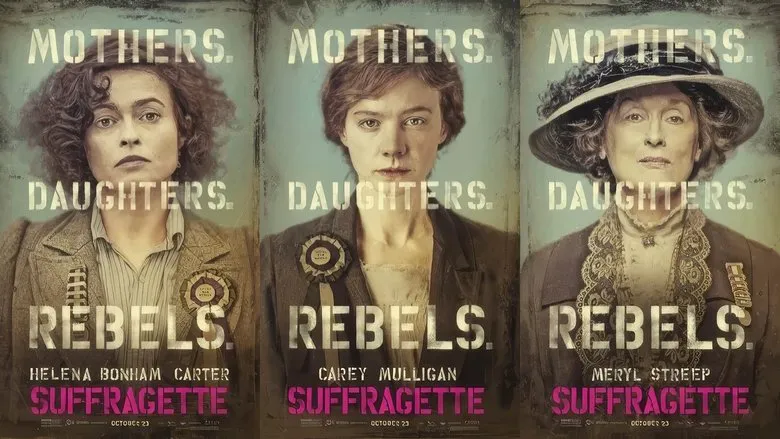
Echoes of the Past, Battles of the Present
The varied reactions to Suffragette from male audiences, both young and old, have also proven particularly insightful. A memorable anecdote from London tells of a 13-year-old boy who, immediately after viewing the film in a cinema filled with adults, spontaneously rose to his feet and resoundingly declared: “Votes for women!” Similarly heartwarming, producer Alison Owen’s 14-year-old son, upon returning from seeing the film with classmates from his all-boys school, was so inspired that he spearheaded the formation of a feminist society. Brendan Gleeson, the male actor who movingly portrayed the compassionate Irish detective in the film, jokingly but genuinely lamented: “I’ve never been on a set with so much estrogen in my life, it feels great!” These reactions highlight the film’s capacity to transcend gender and age, sparking empathy and a desire for justice.
Yet, alongside these heartening responses, there have also been less enlightened reactions. Frivolous male netizens, for instance, were recorded cynically remarking on Emily Davison’s tragic death, questioning, “Davison ran onto the racetrack and was trampled to death by a horse, I wonder what happened to that horse later?” Such condescending sneers and ridiculing remarks, sadly, are not new; they echoed sentiments heard a hundred years ago and persist even a century later.
The societal conditioning that women traditionally receive during their upbringing often dictates a narrative of “don’t make trouble, don’t stand out, be a good girl.” In stark contrast, the women depicted in Suffragette, driven by an imperative to resist profound discrimination and injustice and to fight for their fundamental, legitimate rights, did not hesitate to use force, knowingly embracing stigmatization. Their rallying cry was clear and unwavering: “We don’t want to be law breakers, but lawmakers!”
In 1979, another pivotal moment in British history unfolded with the election of its first female Prime Minister. And in the not-too-distant future, perhaps the United States will also elect its first female President. However, the film subtly yet powerfully reminds us that the pervasive forms of daily and structural violence and discrimination will not magically vanish with these iconic milestones. As director Sarah Gavron eloquently stated, she hoped the film would resonate with a broader meaning—not solely addressing gender issues, but indeed, all forms of injustice across ethnic groups, classes, and other stratified societal divisions.
The profound truth remains: these are all unfinished stories. The acquisition of fundamental human rights is never merely a gift of grace or charity bestowed by those in power, but rather the hard-won outcome of protracted, arduous struggles, frequently at the immense cost of bloodshed and sacrifice. The fight for fairness and justice undeniably continues. And in this ongoing battle, the streets, our homes, and cultural platforms like movie screens, all remain crucial battlefields, even those without the immediate sound of gunpowder.